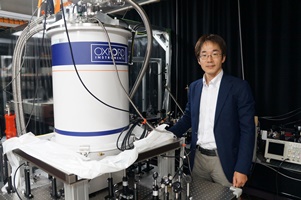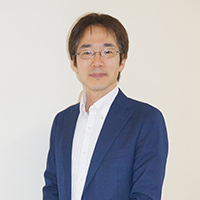Apr. 22, 2016
Switching states in solids
Fumitaka Kagawa, Unit Leader
Please briefly describe your current research.
My work involves developing solid materials that can switch from one state to another―for example, from an insulator to a metal or from a non-magnetic phase to a magnetic one. This is an important area of research from a basic science point of view.
It could also form the basis for a new class of non-volatile memories that can store information even without a power connection. Today’s computers mostly rely on volatile memories, which require a constant supply of power to retain information. Replacing volatile memory technologies with high-speed, non-volatile memories would lead to substantial energy savings.
How did you become interested in your current field of research?
The materials that I study, known as strongly correlated electron systems, maintain a delicate energy balance, with many electronic and magnetic states competing with each other. As a result, their physical properties often change dramatically―sometimes even unexpectedly―following a slight change in the temperature, pressure or magnetic field. These dramatic changes are quite interesting in and of themselves, but what I enjoy most about my research is trying to figure out why they occur—it’s like trying to identify the murderer in a mystery novel. Understanding physical properties at a microscopic level is not easy, and we often have to deduce possible mechanisms from the many plausible options based on our experimental results.
What excites you the most about your current research?
 © 2016 RIKEN
© 2016 RIKEN
What has been the most interesting discovery in your field?
One of the most exciting developments in my field has been the observation of a single skyrmion―a particle-like vortex found in magnetic materials. Because skyrmions can have radii as small as 10 nanometers and can be controlled by applying a weak electric current, they have become an emerging candidate for the next generation of magnetic memory devices, which will have high storage densities and require low power. To realize such applications, it was important to establish a method for creating and annihilating skyrmions under a given environmental condition. To this end, I applied my earlier developed method and succeeded in creating and annihilating many skyrmions at once using a single electric pulse.
How has being at RIKEN helped your research?
The RIKEN Center for Emergent Matter Science has many distinguished scientists with diverse expertise and backgrounds. Through discussions with my colleagues, I have gained new insights into my ongoing research and come up with interdisciplinary research plans. Moreover, at RIKEN I can easily consult with specialists on the use of highly sophisticated techniques and equipment for measuring physical properties.

